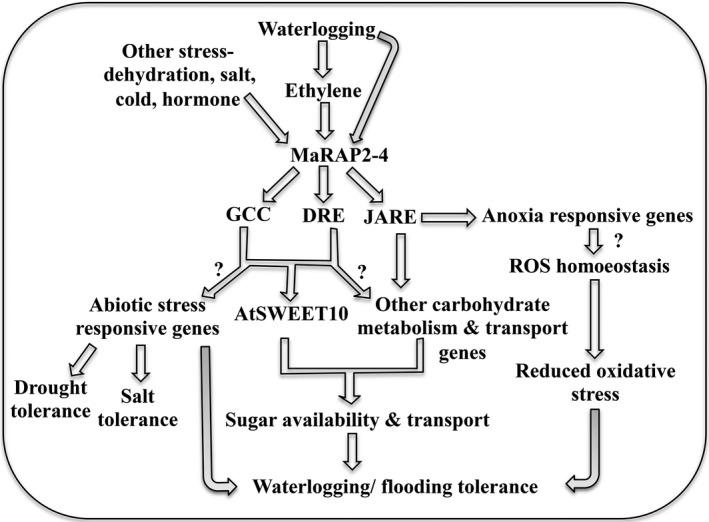Figure 8.

Schematic representation of the mechanism of action of MaRAP2‐4 towards stress response. Waterlogging and ethylene induces expression of MaRAP2‐4, which further activates AtSWEET10, and probably other sugar metabolism/transport‐related genes through DRE/GCC/JARE cascades. They regulate carbohydrate content that plays an important role in waterlogging tolerance. Higher sugar content generally favours stress tolerance as the energy required to establish cellular homoeostasis is provided by these carbon sources. MaRAP2‐4 also reduces stress‐induced oxidative damage through increasing activity of antioxidant enzymes and genes associated it. Salinity and drought stress also induce MaRAP2‐4 expression and enhance tolerance of plants to these stresses. The question marks indicate direct/indirect regulation of MaRAP2‐4 (not experimentally proved).
